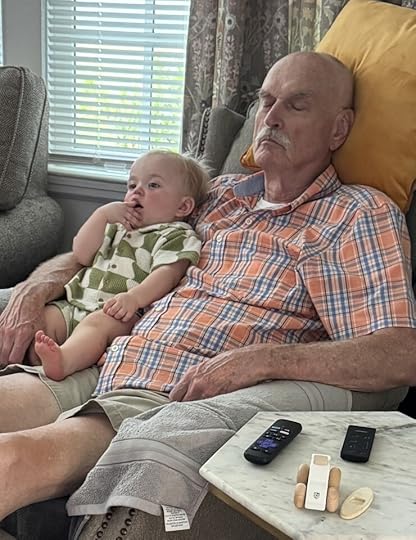Dear Oliver – My Snoozing Buddy

You and I share a daily habit. We both start getting cranky and out-of-sorts shortly after lunch every day. It’s time for our naps. You have been taking naps since the day you were born. I stopped taking naps during my school and working life, but started again after I retired from my job, about ten years ago. When I was working, I found it amusing—perhaps even childish—that my dad would head to the bedroom every afternoon for his nap. But it turns out, dad was in good company.
Famous adult nappers include writers, artists, philosophers, inventors, statesmen, and generals—some of whom are quoted as saying: “The replenishing thing that comes with a nap – you end up with two mornings in a day.” “I count it as an absolute certainty that in paradise, everyone naps. A nap can offer a glimpse into a twilight nether world where gods play, and dreams happen.” “Reading and naps, two of life’s greatest pleasures, go especially well together.”
Until recently, you took two naps every day, one in the morning and one in the afternoon. Now you only take one nap a day. Reducing your naps to once daily seems to be a part of your growing process—like no more formula and baby bottles, eating solid food, and walking and talking. I’m not sure why reducing naps is considered progress, except that it might help you sleep better at night.
When it is time for your nap you let us know by yawning and rubbing your eyes. So, we find a quiet space for you in the bedroom. As for me, I prefer to lay on the screen porch where I can watch the birds and butterflies flitting around the garden and listen to the squirrels and chipmunks fussing at some perceived threat. I might even compose an essay like this one in my head while I soak in the atmosphere and drift off to sleep.
According to Sleepdoctor.com, there are several types of Naps. Short naps typically last about 15 or 20 minutes while longer naps may last an hour or more. Both can be effective, but experts tend to recommend shorter naps. Sleep too long and you might wake up groggy or disorientated.
Some naps even have names. A power nap, for example, is a brief nap, generally only lasting 10 to 20 minutes. People around the world take power naps to relieve daytime sleepiness and increase their productivity at work.
The recovery nap, or replacement nap, is a period of daytime sleep that’s meant to benefit people who didn’t sleep well the night before. Your parents might need a recovery nap after you had a bad night.
A person who works the night shift might take a proactive nap. This type of planned nap is typically longer than a power nap and can often last several hours.
My naps are called recreational naps because they just give me pleasure. I have no trouble sleeping at night, but I do start to drag late in the day. So, I enjoy my afternoon nap, just like my dad did.
As usual, my dad was way ahead of his time in recognizing what I just recently discovered from “modern” research. Dad must have known that naps increase alertness and may improve working memory, which is how the brain stores and manipulates information. Short daytime naps can have a positive effect on learning, can help us become more emotionally stable, and can improve our mood. Naps might even have positive effects on our immune systems, making us less likely to catch colds. British poet Lord Byron (who died over 200 years ago) said “Always nap when you can. It is cheap medicine.”
You don’t seem to mind your naps. When you are tired, you go down pretty easily for an hour or so. I suppose the day will come when you will fight it. And when you begin first grade, naps will no longer be part of your routine—perhaps for the rest of your life. That’s when you and I will part ways. I will still get cranky and out-of-sorts after lunch. So, I plan to follow the advice of that great philosopher, Winnie the Pooh, who said, “Let’s begin by taking a smallish nap or two.”



